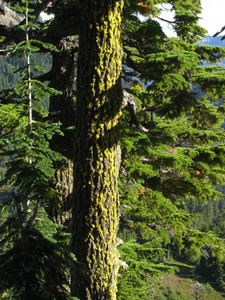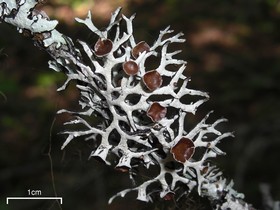ichens are often regarded as fungi that have discovered agriculture.
Think of lichens as a living fungal greenhouses wherein algae – tiny photosynthetic cells – are simultaneously being grown and harvested. Just as the farmer’s greenhouse is oriented to catch the sun’s rays, so too the lichen, which hangs out in the open air. Lichens are the banners of the fungal world.
British Columbia is home to more than 2000 species of lichens. Of these, Wells Gray is home to nearly a thousand species. Once you get the hang of looking for lichens, you’ll notice them everywhere: over rock, bare earth, moss, the branches and trunks of trees, discarded Moose antlers.
From a global perspective, the most surprising feature of Wells Gray’s lichen flora is the great number of “macrolichen” (i.e. foliose and fruticose) species it contains. Some 370 species have been documented here, making this far and away the richest macrolichen flora yet reported for an area of equivalent size!
Particularly well represented are the Pixie Lichens (Cladonia) with 49 species, the Pelt Lichens (Peltigera) with 33 species, and the Bone Lichens (Hypogymnia), with 17 species.
Some good places to look at lichens include Spahats Creek, Whitehorse Bluffs, the Ray Farm, Clearwater Lake Campground, and the upper forests and summits of Trophy and Battle Mountains. Particularly impressive populations of Lung Lichen (Lobaria pulmonaria) and Reindeer Lichens (Cladina spp.) occur along the Ray Mineral Springs trail and on the Dragon’s Tongue respectively.
For more information on the macrolichens of the Clearwater Valley, see Goward & Ahti 1992 and this updated on-line checklist of macrolichens and mesolichens in and around the park.
Text extracted, with partial updates, from the 2nd edition of Nature Wells Gray: A Visitors’ Guide to the Park, by Trevor Goward & Cathie Hickson © 1995, for several years out of print, and now awaiting sponsorship toward a third, much improved edition.
Next up: Mosses & Liverworts



